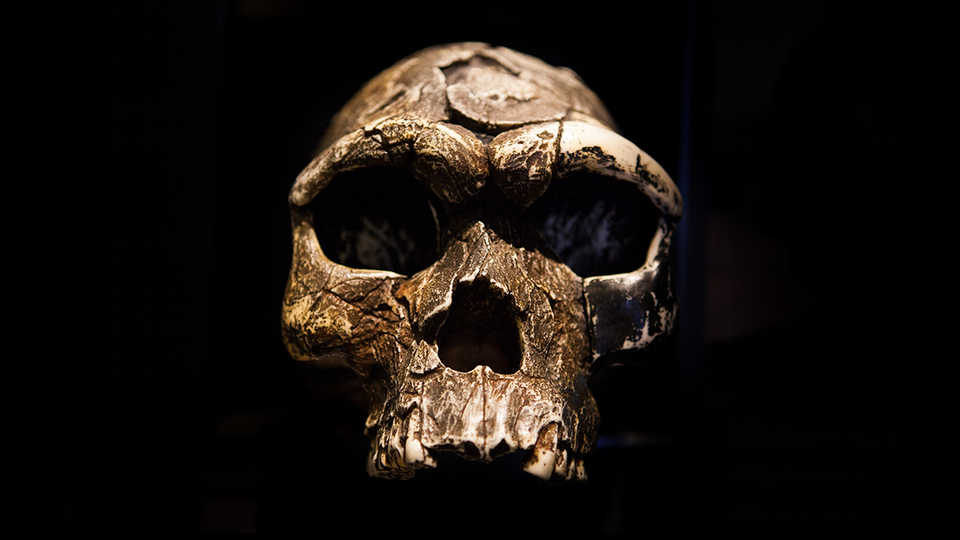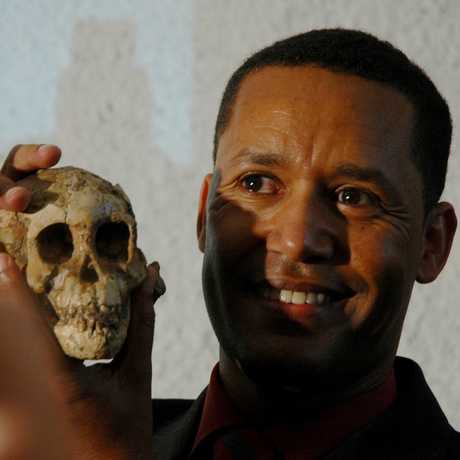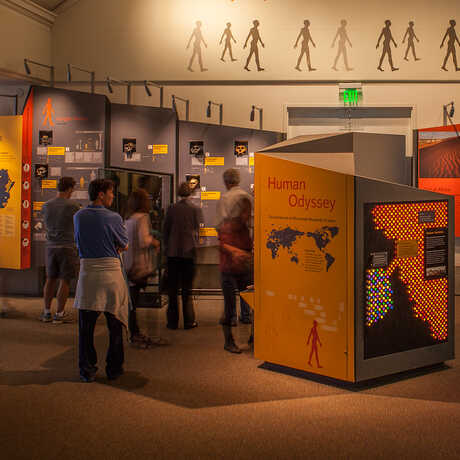Visit an aquarium, planetarium, rainforest, and natural history museum—all under one living roof.

Our species’ complex evolutionary journey gives rise to big questions (and sometimes, big misunderstandings) about the origins of humankind. Thanks to information gathered from fossil evidence, DNA research, and other anthropological findings, we're learning more each day about the answers.
Being Human 101
Are humans considered animals?
Humans are indeed full-fledged members of the animal kingdom, subject to the same environmental and evolutionary pressures that drive animals to adapt, survive, and thrive on Earth. As for the word “animal” (from the Latin animalis), it in fact simply means “having breath.”
Humans are primates . . . but what are primates?
Science uses a system called taxonomy to organize organisms into groups—groups that are closely related to one another evolutionarily and thus share many of the same characteristics and genes. In the order Primates, you'll find gorillas, orangutans, chimpanzees, bonobos, and yes, us.
Within the order of Primates, humans belong to the genus Homo and species sapiens. The word "hominid" is often used to describe our human ancestors. It’s a blanket term that refers to all members of the family Hominidae, which includes our extinct human ancestors as well as the great apes and our own species.
Are humans descended from apes?
The word "ape" has several different (and sometimes conflicting) definitions. As part of the family Hominidae, within the order Primates, humans technically are apes—great apes, to be specific—but what people usually mean by that question is, "Are humans descended from ape species that are living today, or even from monkeys?" The answer to that question is, no; humans, chimpanzees, and gorillas are all distinct species who followed their own evolutionary paths. We do share a common ancestor, though—one that roamed Africa some 10 million years ago.
Does evolution mean that one species dies out and is replaced by the next, superior species?
As it turns out, evolution is much more complex than that. Human evolution, for example, has never been a straight line. The growth of our family tree included multiple branches and dead ends. In the long time span of human evolution, multiple human species coexisted and even occasionally interbred. Our long list of known human ancestors includes Homo neanderthalensis, Homo floresiensis, Homo denisova, Homo heidelbergensis, Homo erectus, Homo habilis, and more. Today, however, we Homo sapiens are the only human species that remains.
Did early human species live at the same time as dinosaurs?
No. Modern humans—Homo sapiens—emerged in Africa only 200,000 years ago. Before that, Homo erectus existed for more than 2 million years before going extinct about 143,000 years ago. Between 2 and 3 million years ago, Homo habilis emerged in Africa, while our oldest known ancestor, the species Sahelanthropus tchadensis, lived 6 to 7 million years ago. As for the dinosaurs, they went extinct a whopping 65 million years ago, meaning we missed them by at least 58 million years.
Who was Lucy and why is she important?
"Lucy" was the name given to fossil remains discovered in 1974, in Ethiopia’s Afar region. One of the oldest fossils ever discovered, Lucy provided scientists with evidence of bipedalism (upright walking on two rear limbs) by our ancestors. The night after the historic fossil was discovered, the scientific team led by Donald Johanson and Tom Gray were listening to the Beatles’ song "Lucy in the Sky with Diamonds" in camp. Inspired, they nicknamed their newest find (then known as "fossil AL 288-1") Lucy, and the name stuck. Both Lucy and Selam—the fossil remains of a 3-year-old girl described by the Academy’s Zeray Alemseged in 2006—belong to the species Australopithecus afarensis, which lived 3 to 4 million years ago.
People look so different around the world. Are modern humans a genetically diverse species?
Despite variations in our appearance, all modern humans are shockingly similar to one another. During our species' near-extinction about 70,000 years ago, the number of humans was reduced to 10,000 mating pairs. When it comes to our DNA, all humans—regardless of race, color, or nationality—are 99.9% alike. In fact, studies suggest that there's more genetic diversity in a single troop of chimpanzees than in all of the world’s humans.
Share This
Meet Dr. Zeray Alemseged, Academy Research Associate in the Department of Anthropology. Learn what drove him to be a scientist—and what led him to the discovery of Selam—in this "Science Heroes" profile.

The Academy's Department of Anthropology focuses on the study of human evolution and cultural diversity. Meet the researchers, explore projects and expeditions, and more.


